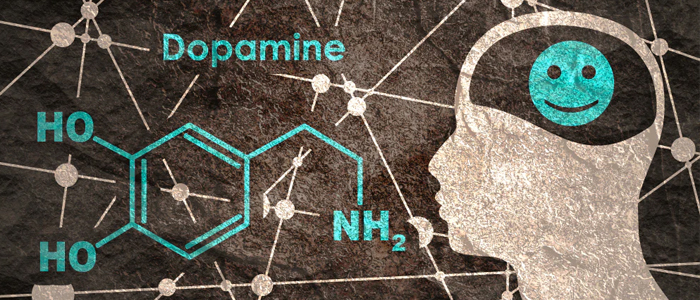- Have any questions?
- [email protected]
What is Dopamine? How It's Imbalance Triggers the Parkinson’s Disease
When we think about walking, talking, or even smiling, we don’t always consider how our brain is working behind the scenes. One of the key players making these actions possible is a chemical called dopamine. It might be small, but its job is mighty—especially when it comes to movement. In people with Parkinson’s disease, the loss of dopamine in the brain is what leads to most of the common symptoms. Let’s understand this connection better and see how dopamine imbalance affects the body.
What is Dopamine, and What Does It Do in the Brain?

Dopamine is a natural chemical messenger made by nerve cells in the brain. It plays many roles, but one of its most important functions is helping control movement. Think of dopamine as a signal carrier—it helps different parts of the brain talk to each other smoothly. It also affects mood, memory, motivation, and attention.
In the area of the brain called the substantia nigra, dopamine is released to help muscles move in a coordinated way. If this system works well, we walk, move our hands, and maintain balance effortlessly. But when dopamine levels fall, movements become slow, stiff, and shaky.
How Dopamine Affects Movement and Brain Signals
In a healthy brain, dopamine travels between nerve cells and carries messages that tell the body how and when to move. It’s like a traffic signal for movement—green means go. But in Parkinson’s disease, as dopamine-producing cells begin to die, the signals get weaker or stop. This confusion in the brain's messaging system is why people with Parkinson’s experience slowness, tremors, and difficulty with balance.
The Link Between Dopamine Loss and Parkinson’s Symptoms
Parkinson’s disease is a slow and progressive disorder that mainly affects movement. One of the earliest and most important changes in the brain is the loss of dopamine-producing cells.
As dopamine levels drop, the following symptoms begin to appear:
- Shaking or tremors in hands, fingers, or legs
- Slowness in movement (also called bradykinesia)
- Muscle stiffness, especially in arms or legs
- Trouble with balance and coordination
- Changes in posture
- Soft or unclear speech
Why Does Dopamine Reduce in Parkinson’s Patients?
The exact reason why dopamine-producing cells begin to die is still being studied, but some possible causes include:
- Genetic factors: Some people may inherit a tendency for these brain changes.
- Environmental exposure: Long-term exposure to pesticides or certain chemicals might play a role.
- Ageing: As we age, the number of dopamine-producing cells naturally reduces, but in Parkinson’s, this process speeds up.
Early Signs and How the Disease Progresses
Parkinson’s disease doesn’t start suddenly. The changes in dopamine levels often begin years before obvious symptoms appear. Here are some early warning signs:
- Smaller handwriting
- Loss of smell
- Trouble sleeping
- Stiffness or slight shaking in one hand
- Feeling more tired than usual
- Constipation
As the disease progresses, movements become harder to control. Many people may also develop non-motor symptoms like depression, memory changes, or sleep problems.
How Managing Dopamine Levels Helps
Even though Parkinson’s disease can’t be cured, managing dopamine levels can make a big difference in daily life. Most treatments for Parkinson’s aim to boost dopamine or mimic its effects.
When dopamine levels are better controlled, people can walk more easily, experience fewer tremors, and regain some independence in activities like dressing, eating, or writing.
Natural and Medical Ways to Support Dopamine Production
Medication
Doctors often prescribe levodopa, which the body turns into dopamine. There are also medications that help dopamine stay in the brain longer. These medicines help reduce symptoms and improve movement.
Diet for Dopamine Support
Eating a healthy diet can support brain health. Foods rich in tyrosine (an amino acid that helps make dopamine) are especially useful. These include:
- Bananas
- Soy products
- Dairy like curd or paneer
- Nuts and seeds
- Lentils
- Green leafy vegetables
Avoiding too much sugar and processed food also helps maintain better brain function.
Regular Exercise (Most important)
Movement helps improve dopamine release in the brain. Simple activities like walking, yoga, or cycling can be very helpful. Exercise also reduces stiffness and improves mood.
Sleep and Stress Management
Good sleep and less stress can protect dopamine levels. Meditation, breathing exercises, and light evening walks can promote relaxation and better sleep quality.
Stay Mentally Active
Learning new things or keeping your brain busy with puzzles, reading, or even gardening can help slow down the decline in dopamine-related functions.
Frequently Asked Questions
Can stress affect dopamine levels in Parkinson’s?
Yes, high stress can lower dopamine levels further. Managing stress through calming activities like yoga or mindfulness may help reduce symptom flare-ups.
Is dopamine loss permanent in Parkinson’s disease?
Yes, once the brain cells that produce dopamine are lost, they don’t grow back. However, medications and lifestyle changes can help manage the symptoms.
Can young people have dopamine-related Parkinson’s?
Yes, while it’s more common in older adults, some people develop symptoms before age 50. This is called Young-Onset Parkinson’s Disease (YOPD).
Are there any Indian diets that support dopamine health?
Yes, a traditional Indian diet with lentils, fresh fruits, leafy vegetables, curd, turmeric, and nuts provides nutrients that support brain health and dopamine production.
How is dopamine different from serotonin in brain function?
Dopamine mainly affects movement, motivation, and focus, while serotonin helps regulate mood, sleep, and digestion. Both are important, but they have different roles.



